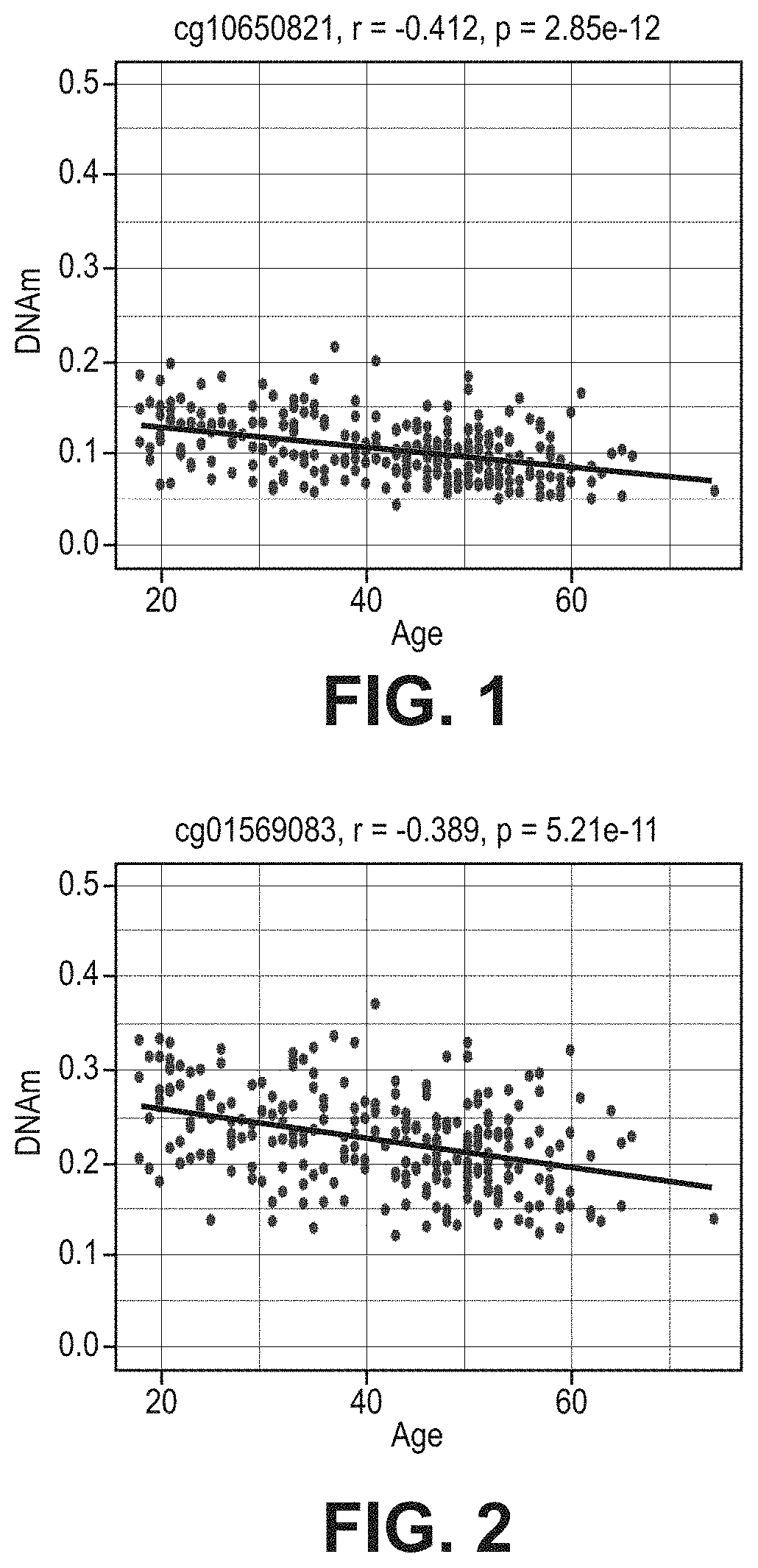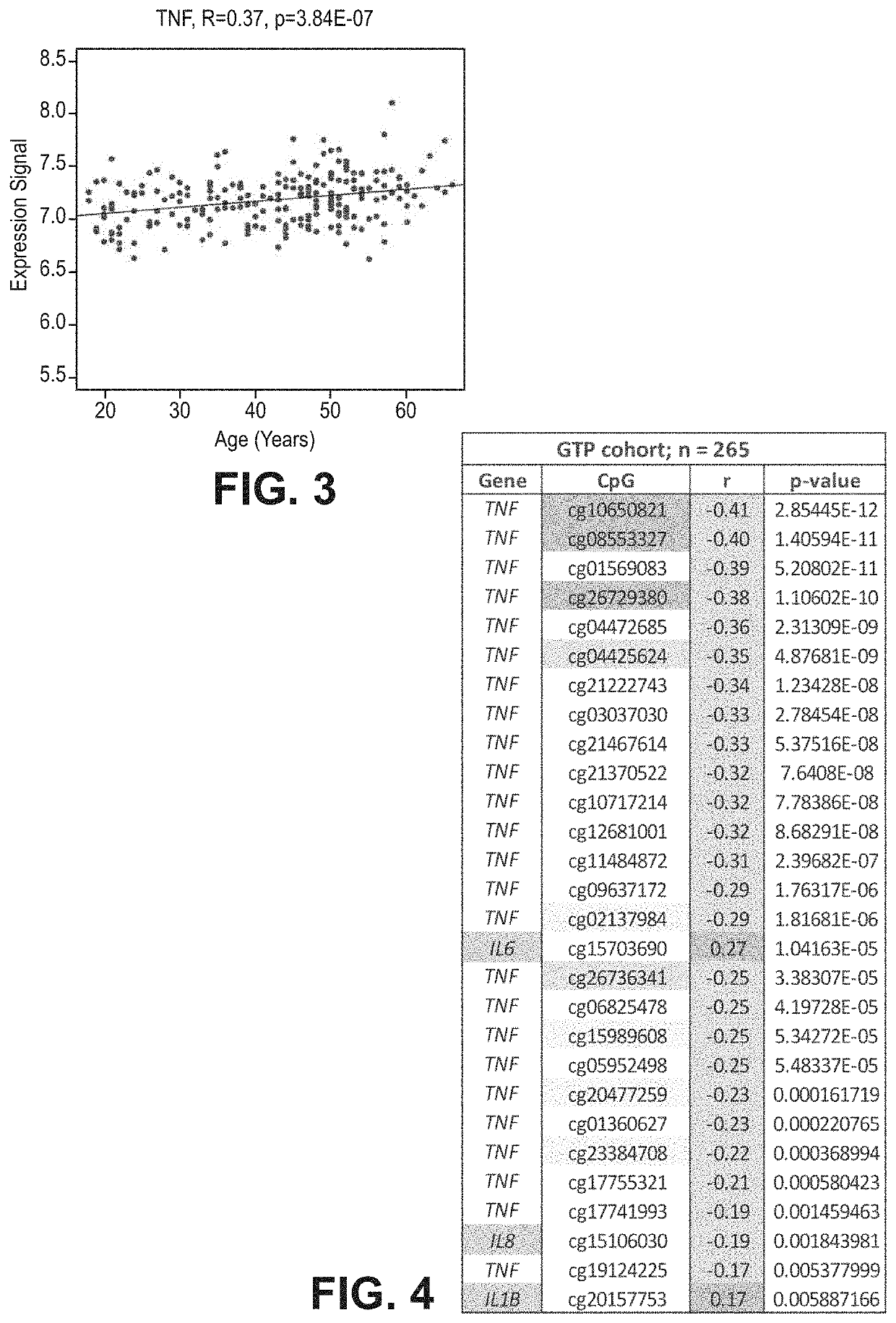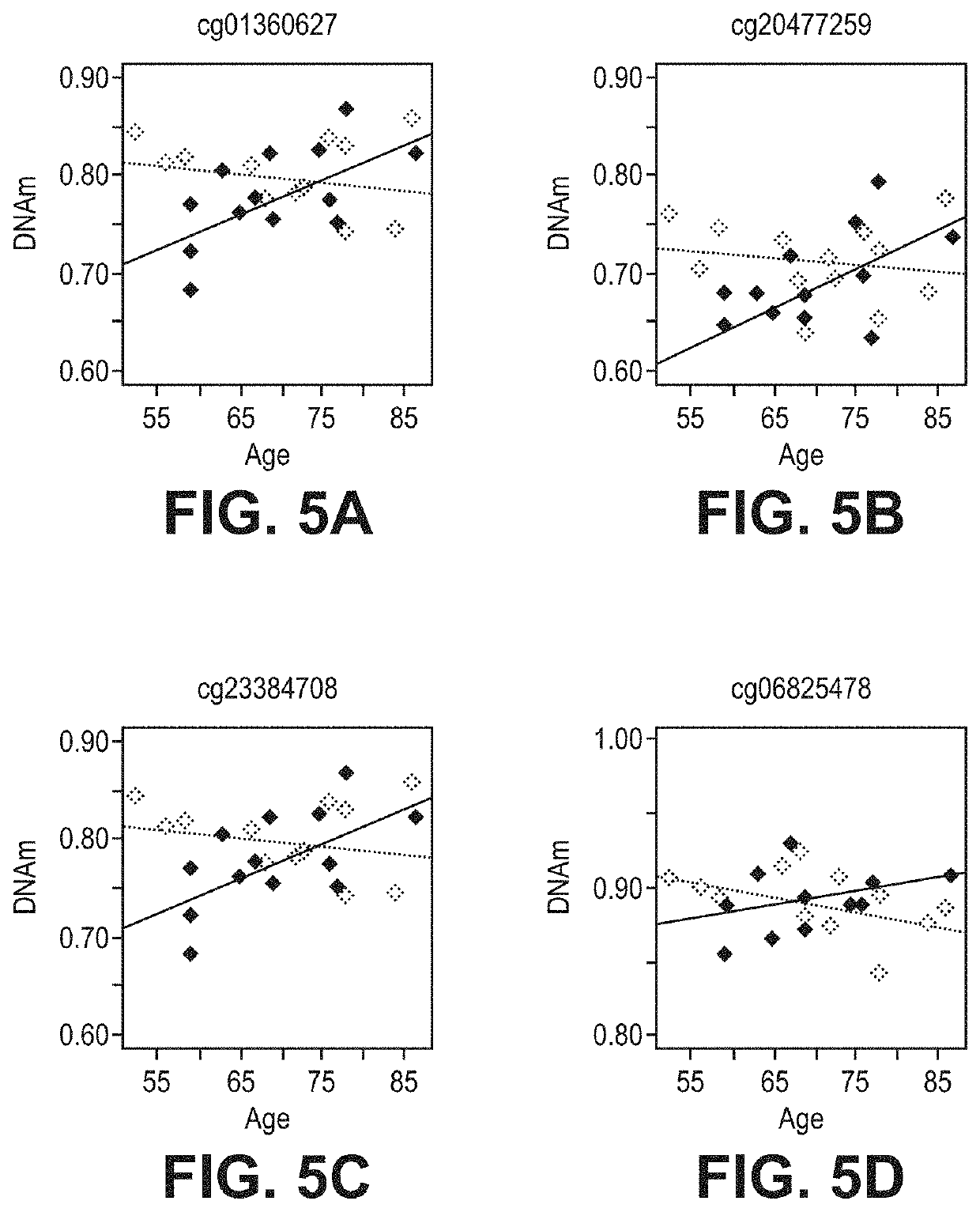Systems and methods for detection of delirium risk using epigenetic markers
a technology of epigenetic markers and delirium risk, which is applied in the field of systems and methods for detecting the risk of delirium in elderly patients using epigenetic biomarker data, can solve the problems of insufficient understanding of the degree to which aging affects the dnam of cytokine genes, and the common and dangerous delirium in elderly patients, so as to increase and reduce the susceptibility to delirium
- Summary
- Abstract
- Description
- Claims
- Application Information
AI Technical Summary
Benefits of technology
Problems solved by technology
Method used
Image
Examples
example 1
[0070]To test whether DNAm patterns among cytokine genes correlate with aging, we first used a dataset based on blood samples from 265 GTP subjects (age range 18-65 years old).
[0071]FIG. 1 illustrates cg10650821 site of TNF-alpha which provides evidence of a decrease in DNAm as a patient becomes older with r=−0.41 and p-value of 2.85×E-12. FIG. 2 illustrates a similar result at cg01569083 with r=−0.389 and a p-value of 5.21×E-11. Furthermore, FIG. 3 shows the correlation between age and TNF-alpha expression levels in blood. The result was r=0.37 and a p-value of 3.84×E-7. The correlation tables show and support the claim that DNAm change along with aging and increase expression in cytokine genes can be used as an epigenetic marker for the indication of risk of delirium.
[0072]As shown in FIGS. 1-4, the highest correlation was at cg10650821 (r=−0.41; p-value of 2.85×E-12) (FIGS. 1-4). All 27 CpGs in TNF-alpha were at least nominally significant and 8 of them were significant at genome...
example 2
[0098]Given the fact that aging and inflammation are the key risk factors of delirium, we focused on the fact that DNA methylation (DNAm) changes dynamically over the human lifespan and that epigenetic mechanisms control the expression of genes including those of cytokines. Thus, we hypothesized that epigenetic modifications specific to aging and delirium susceptibility occur in microglia; that similar modifications occur in blood; and that these epigenetic changes enhance reactions to exogenous insult, resulting in increased cytokine expression and delirium susceptibility. In fact, no published study has assessed DNAm and its relationship to delirium in humans, especially with genome-wide DNAm investigation.
[0099]In this Example we compared DNAm status in blood from hospitalized patients with and without delirium to identify clinically useful epigenetic biomarkers for delirium from blood samples, which are routinely obtained from patients. We used blood for three reasons: 1) the fu...
example 3
[0167]Although delirium is common among elderly patients, it is underdiagnosed and undertreated. Various screening methods have been developed to characterize the epidemiology and risk factors of delirium (e.g., the Confusion Assessment Method (CAM) and Confusion Assessment Method for Intensive Care Unit (CAM-ICU)). Although they have excellent sensitivity and specificity in research settings, they are found to have suboptimal sensitivity (38-47%) in the context of “real world” intensive care units. Thus, among elderly patients at high risk for delirium, identification of biomarkers of delirium would aid in diagnosis and following intervention. Above, we reported the potential role of epigenetics, especially DNA methylation (DNAm) in pro-inflammatory cytokine genes, in pathophysiology of delirium, highlighting the role of neuroinflammation. However, given the complexity of pathophysiological mechanism of delirium as well as known risk factor of delirium among dementia patients, it i...
PUM
| Property | Measurement | Unit |
|---|---|---|
| Time | aaaaa | aaaaa |
| Length | aaaaa | aaaaa |
| Ratio | aaaaa | aaaaa |
Abstract
Description
Claims
Application Information
 Login to View More
Login to View More - R&D
- Intellectual Property
- Life Sciences
- Materials
- Tech Scout
- Unparalleled Data Quality
- Higher Quality Content
- 60% Fewer Hallucinations
Browse by: Latest US Patents, China's latest patents, Technical Efficacy Thesaurus, Application Domain, Technology Topic, Popular Technical Reports.
© 2025 PatSnap. All rights reserved.Legal|Privacy policy|Modern Slavery Act Transparency Statement|Sitemap|About US| Contact US: help@patsnap.com



